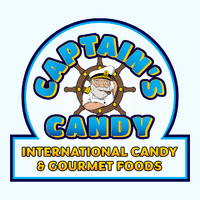5 Simple Techniques For I Luv Candi
Not known Factual Statements About I Luv Candi
Table of ContentsWhat Does I Luv Candi Do?The Best Strategy To Use For I Luv CandiGetting The I Luv Candi To WorkExcitement About I Luv CandiOur I Luv Candi Diaries
You can additionally estimate your very own revenue by applying various presumptions with our financial strategy for a sweet shop. Typical regular monthly income: $2,000 This kind of sweet-shop is frequently a small, family-run business, possibly known to citizens yet not drawing in multitudes of vacationers or passersby. The shop may provide a selection of usual candies and a couple of homemade treats.
The store does not commonly lug uncommon or expensive items, concentrating instead on inexpensive treats in order to keep routine sales. Assuming an average investing of $5 per client and around 400 customers each month, the regular monthly income for this sweet-shop would be approximately. Ordinary regular monthly income: $20,000 This sweet-shop take advantage of its critical place in a busy city area, attracting a multitude of customers looking for wonderful indulgences as they go shopping.

Along with its varied candy option, this store could likewise offer related items like gift baskets, sweet bouquets, and novelty items, providing numerous profits streams. The store's area needs a higher allocate lease and staffing but brings about greater sales volume. With an approximated ordinary costs of $10 per consumer and about 2,000 consumers per month, this shop might generate.
Some Ideas on I Luv Candi You Should Know
Found in a significant city and visitor destination, it's a huge facility, typically topped multiple floorings and potentially component of a national or worldwide chain. The store uses an immense range of sweets, consisting of unique and limited-edition items, and merchandise like branded apparel and accessories. It's not just a store; it's a location.
The functional expenses for this type of shop are substantial due to the area, dimension, team, and features used. Presuming a typical purchase of $20 per consumer and around 2,500 consumers per month, this front runner shop could achieve.
Group Instances of Expenditures Typical Regular Monthly Expense (Variety in $) Tips to Lower Expenditures Rent and Utilities Shop lease, power, water, gas $1,500 - $3,500 Take into consideration a smaller location, bargain rental fee, and utilize energy-efficient lighting and devices. Stock Sweet, snacks, packaging products $2,000 - $5,000 Optimize stock management to lower waste and track prominent items to prevent overstocking.
Getting My I Luv Candi To Work
Advertising and Advertising Printed products, online ads, promotions $500 - $1,500 Emphasis on cost-effective electronic advertising and marketing and utilize social networks platforms totally free promotion. Insurance coverage Organization liability insurance coverage $100 - $300 Search for competitive insurance coverage prices and consider bundling policies. Devices and Maintenance Sales register, present racks, repairs $200 - $600 Buy pre-owned devices when feasible and perform normal upkeep to extend equipment life expectancy.

This suggests that the sweet store has gotten to a factor where it covers all its dealt with expenditures and begins creating income, we call it the breakeven factor. Take into consideration an instance of a sweet-shop where the regular monthly set prices commonly total up to about $10,000. A harsh price quote for the breakeven factor of a sweet-shop, would then be about (since it's the complete set expense to cover), or selling between with a rate array of $2 to $3.33 each.
The 30-Second Trick For I Luv Candi
A huge, well-located candy shop would certainly have a greater breakeven factor than a small shop that doesn't require much income to cover their expenditures. Interested regarding the productivity of your sweet shop?
One more hazard is competition from various other sweet-shop or larger stores who could offer a broader selection of products at lower costs (https://www.webtoolhub.com/profile.aspx?user=42385678). Seasonal changes popular, like a decline in sales after vacations, can also influence profitability. In addition, changing customer choices for healthier treats or dietary limitations can reduce the allure of traditional sweets
Lastly, financial downturns that minimize customer investing can affect sweet shop sales and success, making it vital for candy shops to manage their costs and adapt to altering market problems to stay successful. These dangers are often consisted of in the SWOT evaluation for a candy store. Gross margins and net margins are crucial indications made use of to determine the success of a sweet shop organization.
The smart Trick of I Luv Candi That Nobody is Discussing
Basically, it's the revenue remaining after subtracting expenses directly pertaining to the candy supply, such as purchase costs from providers, production expenses (if the candies are homemade), and team salaries for those associated with manufacturing or sales. https://rebrand.ly/4fx7z5p. Web margin, conversely, factors in all the expenditures the sweet store sustains, consisting of indirect costs like management costs, marketing, rental fee, and tax obligations
Sweet stores normally have an average gross margin.For circumstances, if your sweet store gains $15,000 per month, your gross profit would certainly be roughly 60% x $15,000 = $9,000. Think about a sweet shop that marketed 1,000 candy bars, with each bar priced at $2, making the complete earnings $2,000.